1
Print of Barbara Leighton's (Barleigh) Chop-Name Stamp Used to Sign her Block Prints20th Century, Circa 1930's-1980's
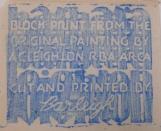 Credits:
Credits:The Leighton Foundation Permanent Collection (Archives)
Glenbow Archives RCT-967-13 (Recording)
2
Barbara Leighton's (Barleigh) Linoblock Chop (Name Stamp Used to Sign her Block Prints)20th Century, Circa 1930's-1980's
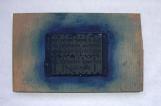 Credits:
Credits:The Leighton Foundation Permanent Collection (Artifact)
3
"Deer,Kananaskis" Lino-Block Print by Barbara Leighton (Barleigh) Based on "First Snow"20th Century, Circa 1930's-1980's
Canada
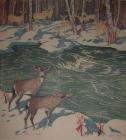 Credits:
Credits:The Leighton Foundation Permanent Collection (Artwork)
4
Lino-Block Created by Barbara Leighton (Barleigh) to Produce the "Deer, Kananaskis" Block Print20th Century, Circa 1930's-1980's
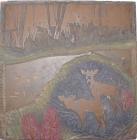 Credits:
Credits:The Leighton Foundation Permanent Collection (Artifact)
5
Lino-Block Created by Barbara Leighton (Barleigh) to Produce the "Deer, Kananaskis" Block Print20th Century, Circa 1930's-1980's
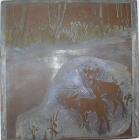 Credits:
Credits:The Leighton Foundation Permanent Collection (Artifact)
6
Lino-Block Created by Barbara Leighton (Barleigh) to Produce the "Deer, Kananaskis" Block Print20th Century, Circa 1930's-1980's
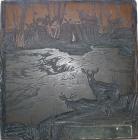 Credits:
Credits:The Leighton Foundation Permanent Collection (Artifact)
Glenbow Archives RCT-967-13 (Recording)
7
Lino-Block Created by Barbara Leighton (Barleigh) to Produce the "Deer, Kananaskis" Block Print20th Century, Circa 1930's-1980's
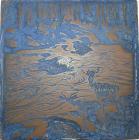 Credits:
Credits:The Leighton Foundation Permanent Collection (Artifact)
Leighton Staff (Text)
8
Grumbacher-Wood and Linoleum Block Cutting Tools owned by Barbara Leighton (Barleigh)20th Century, Circa 1930's-1980's
 Credits:
Credits:The Leighton Foundation Permanent Collection
9
"First Snow" Watercolour and Guache Painting by Alfred Crocker (A.C.) Leighton20th Century
Canada
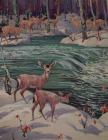 Credits:
Credits:The Leighton Foundation Permanent Collection (Artwork)
Glenbow Archives RCT-967-13 (Recording)
10
Barbara Leighton and PrintmakingBarbara Leighton was, and is, well known for her woodcut and linocut prints. Perhaps her most notable works are prints of her husband, AC Leighton's, watercolour paintings. Among the many honours that she received, the New York Central Reference Library honoured Barbara and also purchased one of her prints for their collection.
Historically, woodcuts were used for decoration of textiles and other surfaces-a technique that Barbara used to embellish her own textiles. The linocut process is very similar to the woodcut printing technique. As the material was invented only after the First World War, the first evidence of artists using linoleum rather than wood was around 1920.
The first step in the creation of a linocut print is to draw the image onto the linoleum and next to begin cutting away certain areas of the drawing. Since the colours are applied one at a time-usually the lightest first-only the areas that must be white are cut away at this time. As you can see, Barbara cut a different lino block for each colour that she intended to use. Because each block was meant for a different colour, you will notice that each block is very different.
One must use a roller called a brayer to evenly apply the colour to each block. Once the ink is on the block, a sheet of paper is placed on top and rubbed so that the ink is transferred to the paper. This process is repeated for each block to build up a variety of colours on the paper.
Many of Barbara's artist friends sent her Christmas cards with their own prints inside, as you can see here. A.C. Leighton also made cards from Barbara's linocut prints of his paintings. Early Snow is such an example, for which you can see the four linocuts by Barbara and two finished cards. If you look around the room you will also see an actual Barleigh print of this linocut.